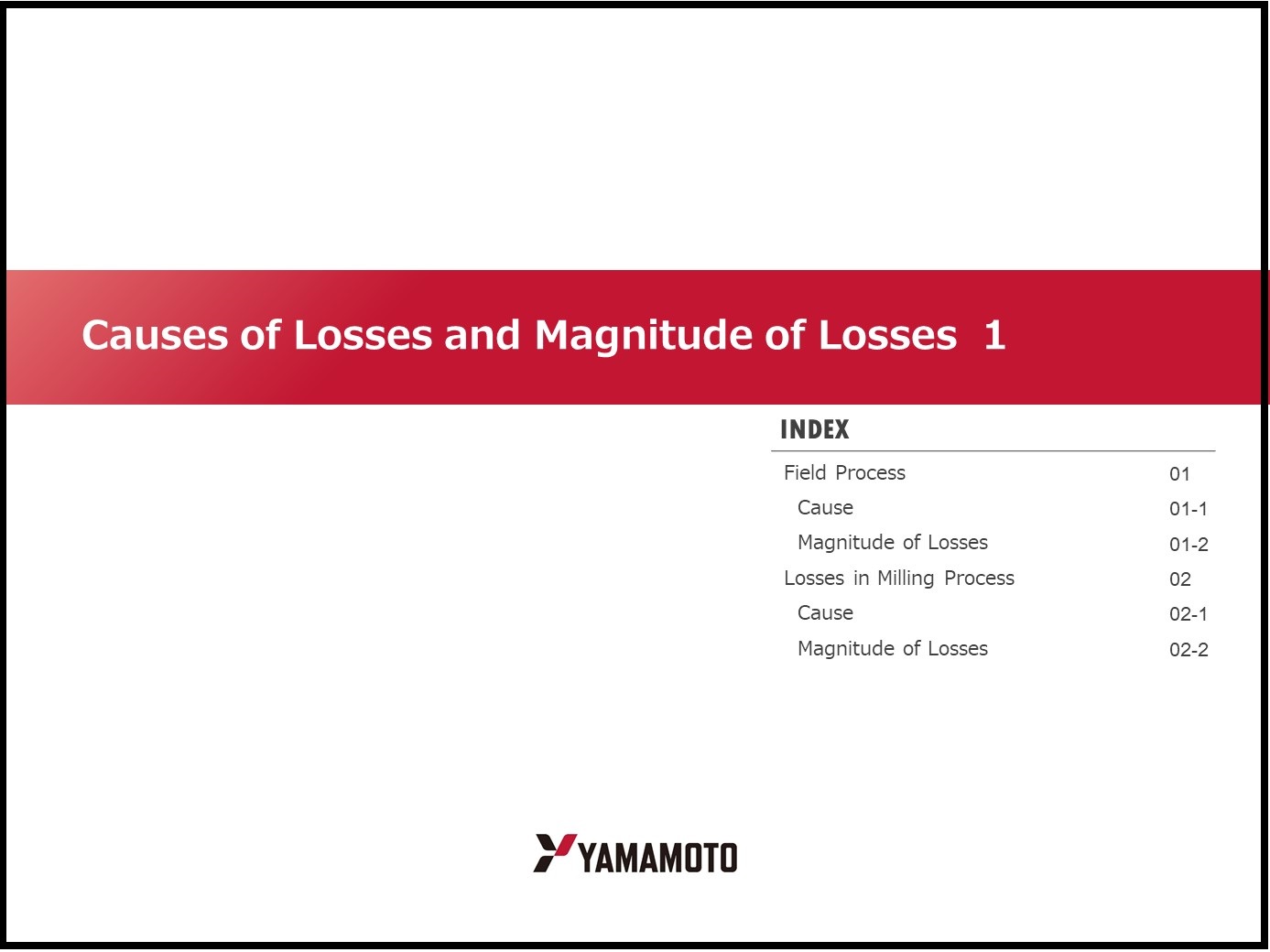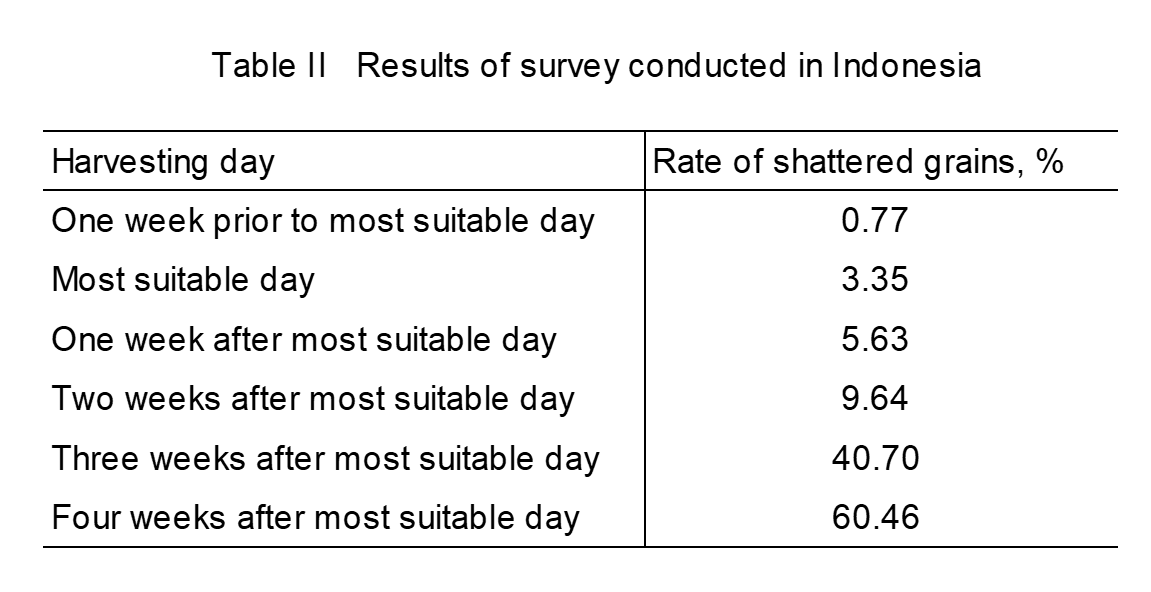78. Causes of Losses and Magnitude of Losses 1
- INDEX -
Field Process
Cause
Magnitude of Losses
Losses in Milling Process
Cause
Magnitude of Losses
Field Process
Cause
The volume of losses in the field process has increased remarkably than before due to the following reasons:
1)HYV’s have replaced local varieties in developing countries. This gave farmers the benefit of increased yield, but it brought increased losses in the field process. The peak harvesting period of HYV’s has become much shorter than before in farms, hamlets, villages, countries and prefectures due to the substantially higher yield of HYV’s compared to local varieties, as well as due to remarkably higher yield of new HYV’s compared to conventional HYV’s due to the uniform ripening time per ear of HYV’s compared to local varieties and due to the cultivation of representative single variety in a larger area. This involved the necessity of handling a larger volume of crops in a shorter period of time and revealed the insufficient processing capacity. In short-handed areas, reaping could not be carried out properly while in areas with excessive labor, harvesting work became rough and losses increased.
2)HYV’s, most of which readily shatter, had increased losses due to fallen grain.
Magnitude of Losses
Reaping:
The magnitude of losses, even those related only to reaping, depends on numerous factors such as the relationship between the day when reaping is done and the stage of ripening, reaping tools, reaping height, varieties, weather conditions on the day of reaping, region and labor. Thus, it is nearly impossible to obtain the real average losses per country or per region.
The result of the ICA survey in Indonesia (1982) are given below.
1)The figure are average value of 96 selected fields for survey. These losses can be regarded as the minimum losses due to the selection of the fields without lodging and damage by insects and diseases, and the most suitable day of reaping (28 ? 32 days after flowering, specified by the farmers). Shattered grains of lodged portions only were surveyed, and the rate was found to be 1.4 ? 8.2%. However, these figures cannot be handled statistically because the frequency of lodging is unclear.
2)The rates of fallen grins three days prior to and three days after the most suitable day for reaping were 0.5% and 2.1%.
3)The results of a survey by IRRI regarding the relationship between harvesting day and shattered grains are given in Table II.
4)There was also a case where the rates of losses due to shattering were 1.7% and 2.8% with stalks reaped at low and high positions, respectively.
5)The magnitude of losses in the reaping stage also depends on how reaping has been arranged, as described below.
* larger number of workers arranged Losses 2.8%
(100 -150 workers per hectare)
* 4 ? 5 workers arrange Losses 1.4%
* about 10 workers arranged Losses 2.0% (the case where standing rice
was bought by middlemen)


